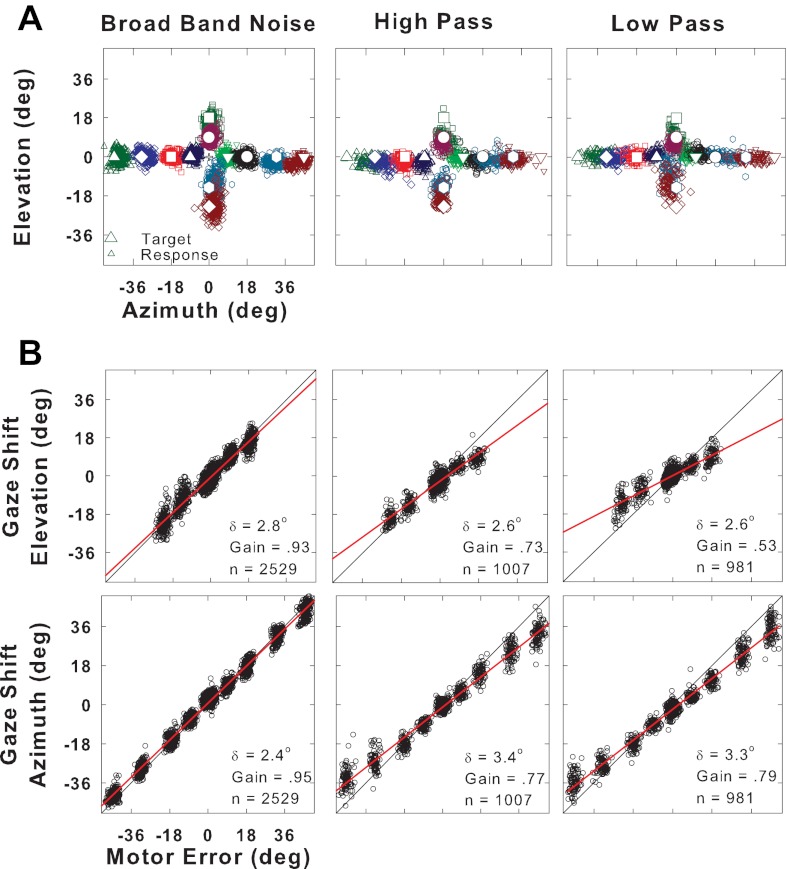Fig. 1.
Localization of long-duration broadband (BB), high-pass (HP), and low-pass (LP) noise targets. A: final gaze position (small open symbols) for stimuli presented from 12 target locations (corresponding large symbols) at (±45°, 0°), (±32°, 0°), (±18°, 0°), (±9°, 0°), (0°, 18°), (0°, 9°), (0°, −14°), and (0°, −23°). Central fixation LED is shown as +. B: accuracy of the vertical (gaze shift elevation, top) and horizontal (gaze shift azimuth, bottom) components of the saccades. Each point corresponds to a single trial. The motor error (abscissa) is the horizontal or vertical component of the distance between the initial gaze position on each trial and the actual position of the target. The gaze shift amplitude (ordinate) is the corresponding horizontal or vertical component of the response to that target position from the initial gaze position. Red line is the linear regression of saccade amplitude component and the motor error. Gain is the slope of the regression line and represents localization accuracy (gain = 1 corresponds to perfect localization accuracy); δ is the residual error after regression and is an indication of response precision or consistency; n is the number of trials. Data are from cat 18.

